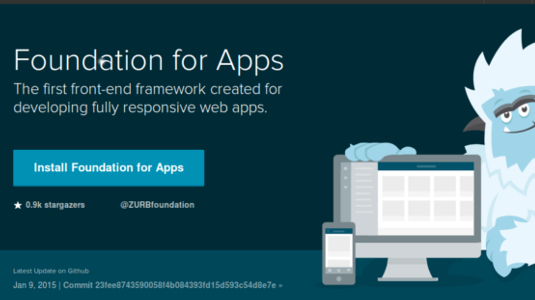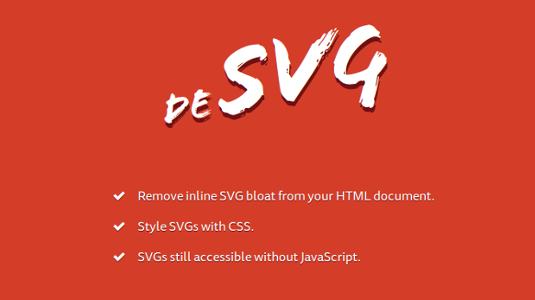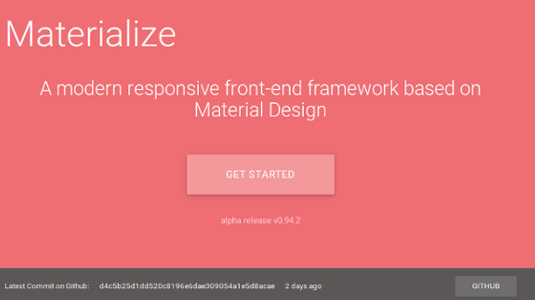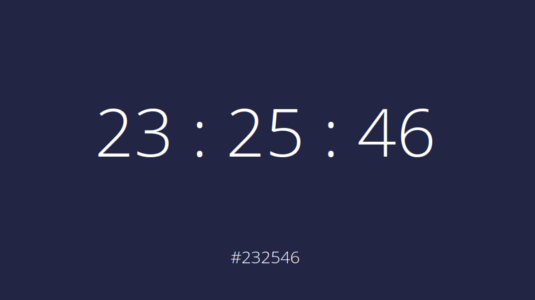10 new web tools to add to your armoury
We investigate some of best new web design tools to appear over the last few weeks.
06. Foundation for Apps

It's true: there's now a flavour of the popular responsive front-end framework Foundation that helps you make apps. Foundation for Apps eases the pain of making responsive, mobile-optimised web apps by providing a solid code base for your project.
The people at Zurb have built a new grid based on Flexbox specially for apps that gives you the power to create complicated grids without having to deal with the complexity of Flexbox yourself. They've also developed a set of classes and mixins called Motion UI that makes it easy for you to add animation to your apps. Check it out here.
07. interact.js

Interact.js is a JavaScript module for drag and drop, resizing and multi-touch gestures with inertia and snapping for modern browsers (and also IE8+). It does work that might otherwise be handled with jQuery UI, but unlike jQuery UI it works well with SVG.
Created by Taye Adeyemi, interact.js is also lightweight and handles multi-touch input. Its aim is to help you out by presenting input data consistently across different browsers and devices.
You can read more about it and play around with some demos on this Mozilla Hacks post.
08. deSVG

Ben Howdle has created this handy tool for removing inline SVG bloat from your HTML document. On his deSVG page Howdle writes: "deSVG takes the <img /> tags you supply. It then grabs, using AJAX, the raw SVG you've set in the 'src' attribute and replaces that <img /> with the <svg /> it downloads". You can style SVGs with CSS, and SVGs are still accessible without JavaScript.
09. Materialize

A group of students from Carnegie Mellon University are working on this responsive front-end framework to make it easy to get started with Material Design. Materialize is available as CSS and JavaScript files, or alternatively SASS files, and can also be installed via Bower.
Get the Creative Bloq Newsletter
Daily design news, reviews, how-tos and more, as picked by the editors.
It includes starter templates to help get you going, and lots of components to make it quick to implement the Material style. This project is still in its alpha stage and at this point there are a range of visual components as well as dialogs, dropdown menus and some nav elements for mobile.
10. What colour is it?

What colour is time? We've all asked ourselves this question at some point, and now this website has the answer. The time (on Earth) can be represented by six digits corresponding to the hours, the minutes and the seconds. Six digits, just like a hex value. This clock converts the current time into a CSS colour and displays it as the background to the page. Simple, wonderful.
Words: Tanya Combrinck
Tanya Combrinck has been writing about the web for over four years, and the internet is actually her preferred method of interacting with humanity. You can find her on Twitter at @tanyacombrinck.
Like this? Read these:

Thank you for reading 5 articles this month* Join now for unlimited access
Enjoy your first month for just £1 / $1 / €1
*Read 5 free articles per month without a subscription

Join now for unlimited access
Try first month for just £1 / $1 / €1
The Creative Bloq team is made up of a group of design fans, and has changed and evolved since Creative Bloq began back in 2012. The current website team consists of eight full-time members of staff: Editor Georgia Coggan, Deputy Editor Rosie Hilder, Ecommerce Editor Beren Neale, Senior News Editor Daniel Piper, Editor, Digital Art and 3D Ian Dean, Tech Reviews Editor Erlingur Einarsson, Ecommerce Writer Beth Nicholls and Staff Writer Natalie Fear, as well as a roster of freelancers from around the world. The ImagineFX magazine team also pitch in, ensuring that content from leading digital art publication ImagineFX is represented on Creative Bloq.
